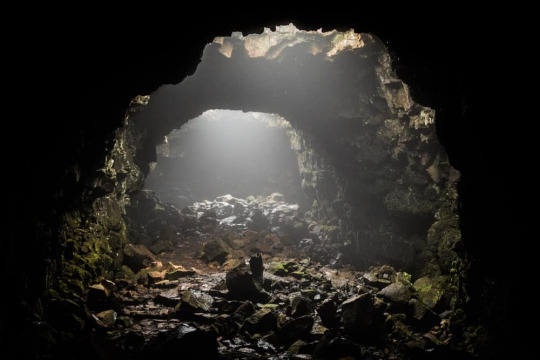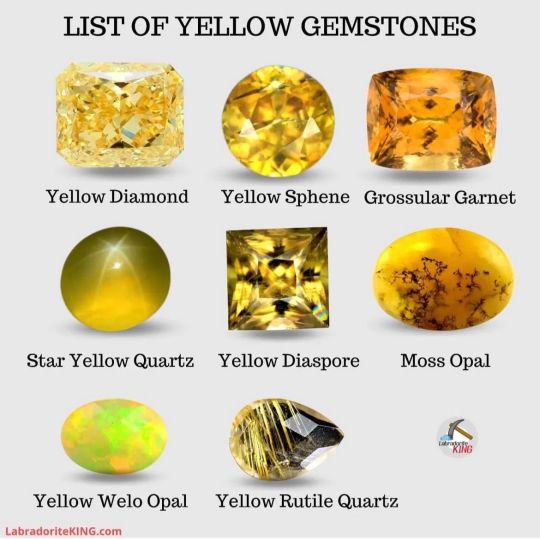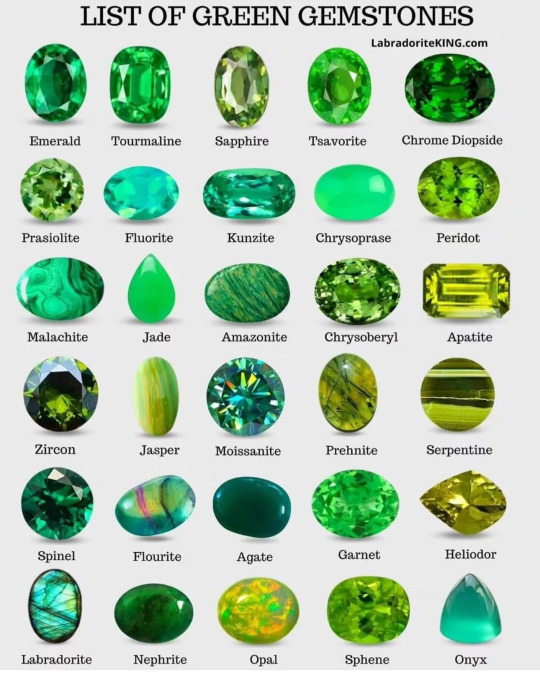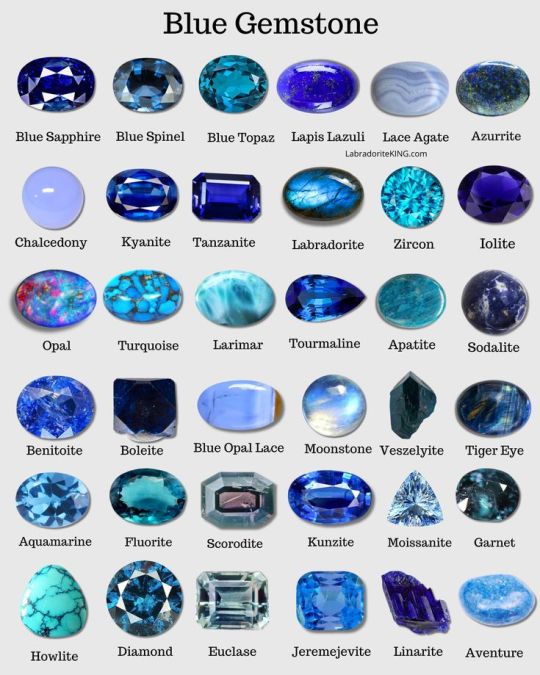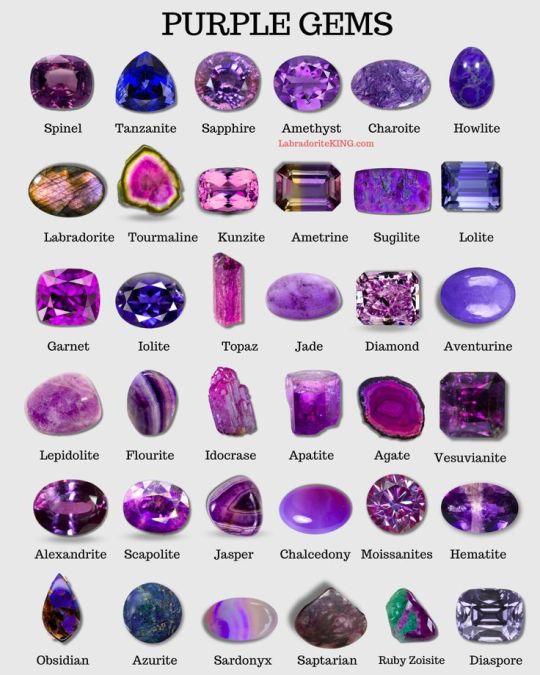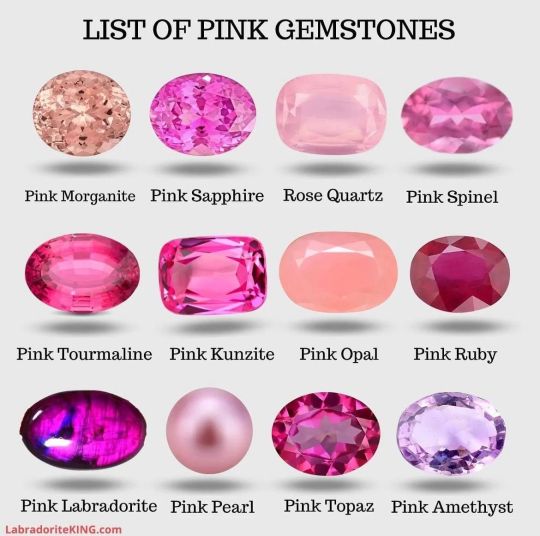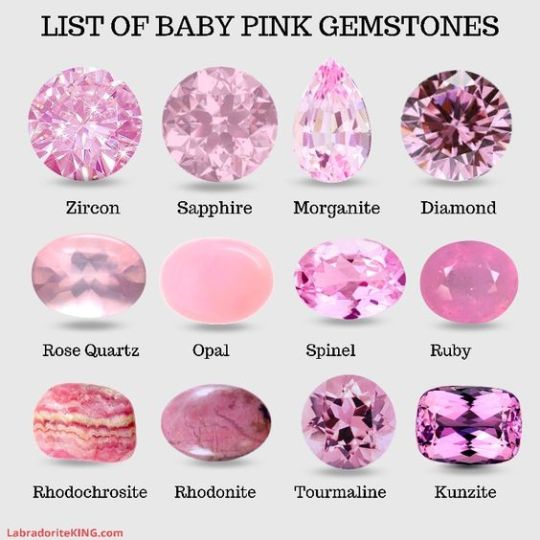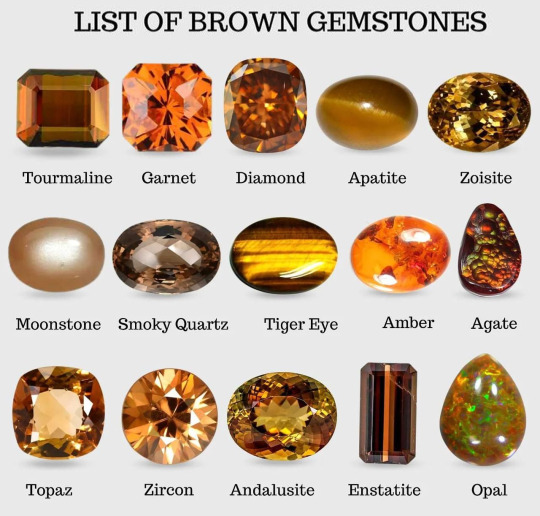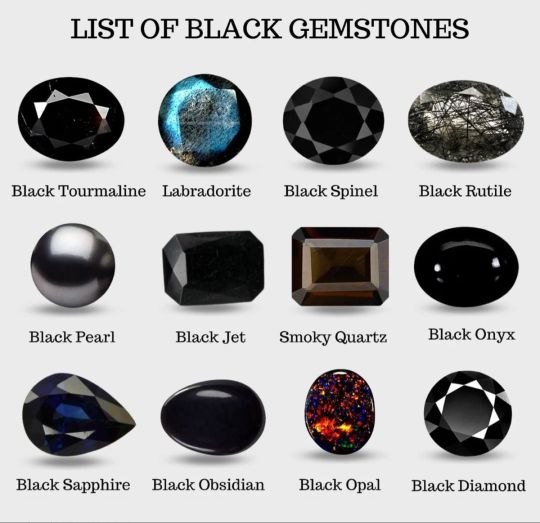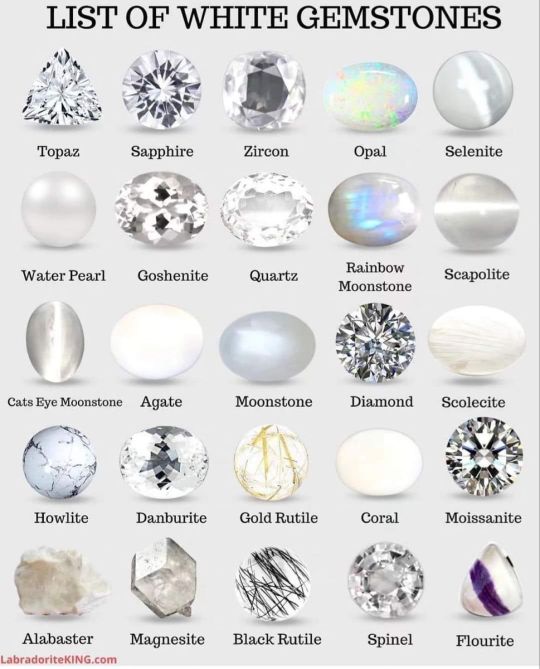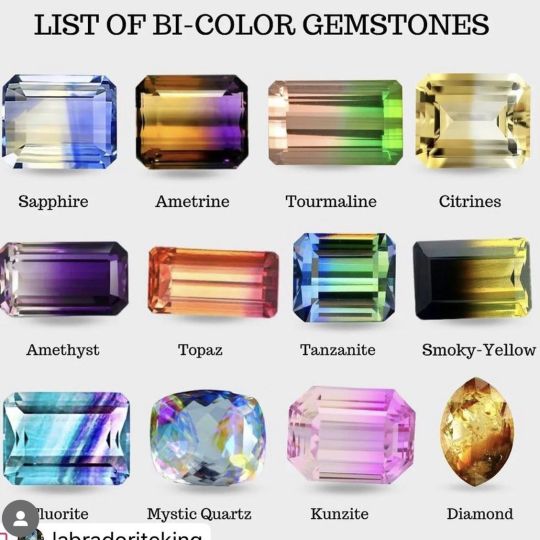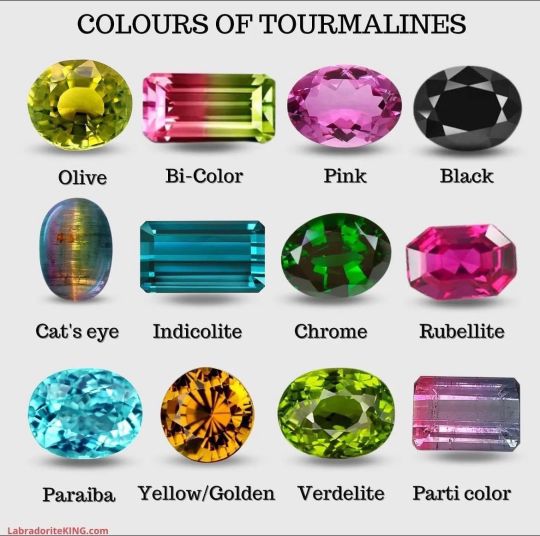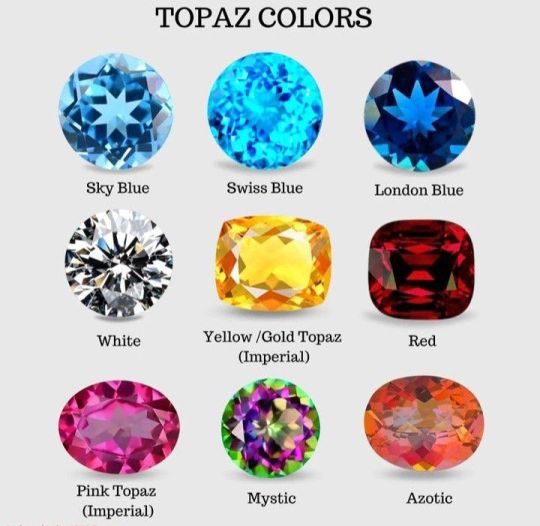Text
Things that real life sex has taught me that isn't in porn :
Shaking during sex, no no, not her legs, him. Yeah. It happens to men too, from anticipation and excitement. I only had one partner who used to have that sometimes and the first time it freaked me out lol.
Queefing, that has to happen at least once during sex, I mean, air goes in, sorry but it's gonna have to come out.
Going too deep actually hurts, oh my fucking god lol. IYKYK. Hitting the cervix feels like ... hmmm. Dying. Yeah, death. Like I felt your penis in my actual guts and now I need to throw up because the cramping is horrendous. Thanks, don't do that again. Does the chick in porn not have a cervix or??? I have literally thrown up from this before, it is the most painful thing I have ever experienced during sex, hands down.
That he might lose his boner mid-sex, this one's a big one lol pun intended. And uh, it might not be your fault. Actually most of the time it isn't. And guys, if it does happen, please communicate, it's really not a big deal, at least not for me, Im down to help, and also I can feel it getting softer okay lol don't be lying.
Sometimes it can be painful for the guy too, this one's more common for men who have foreskin, at least in my experience.
That you can get your period mid-sex, oh man. A sad moment for all of us. But here's the thing, when you're orgasming, everything contracts, and your uterus will contract and unfortunately if you were expecting it, welp, here it is. So yeah, it happens. But that's pretty great, personally i'm able to make my period come faster by masturbating over and over, true story (only if its a day or two away).
You can probably orgasm but it's not a given, or taking way longer than you thought. I have ridden dick like my life depended on it because I was felt it annnnnnnnnd it was gone, annnnnd it's back, noooope it's gone.
Related to the last point, looking cute when orgasming, sweetie listen, I look like I ran a marathon and like Im about to die (plus im a smoker, imagine that). So that lady in porn who's like *cute voice* oohh I'm coming! ... idk about you but I don't look cute when im about to cum super hard lol.
Stopping mid-sex because you don't feel like it anymore.
Sometimes it takes forever to get a condom or to put it on, relax dude, no one's judging you, I would rather you don't give me an std or a baby so take your time.
There's no shame in asking to put a towel down, fluids, we have those, and we have a lot of those, and sometimes, some of us can unexpectedly squirt, whatever tf that fluid is, it's gonna go everywhere.
That female lubrication can have a different color/texture depending on where she's at in her cycle/if she has an infection.
Sex is smelly.
A lot of us moan louder than we actually want to, to help you out. I have done that before, when bored or when the guy was doing something I didn't really enjoy but he did. Whatever, hey at least I've never faked an orgasm, Im literally not giving you that lol if you suck, you suck sorry. Now ... the reason you prob shouldn't do that is that he's gonna think he's doing something good, when really he isn't. Then he's gonna have sex with someone else, and do the same shit, and she's also not gonna cum. Don't be the reason another lady can't have an orgasm ok.
That trying different positions isn't super glamorous. Some hurt, some don't feel like anything, some are awkward. Just because your bestie swears by reverse cowgirl, doesn't mean it'll work for you.
That it's ok to stop and take a water and snack break, sorry one sec, Im hypoglycemic.
That a lot of the time when you get fucked hard enough, you're shifting, like, quite a bit, and next thing you know you're almost falling off the bed, it's not cute, who cares.
That sex can be awkward, uncomfortable, painful, not enjoyable, and that all of that is normal.
31K notes
·
View notes
Text
I cannot believe there's absolutely no way to watch free shows and movies anymore, there are too many paid streaming platforms and pirating websites have viruses and ads preventing you from watching it uninterrupted((.)) id rather follow the rules and purchase media moving forward because it is too inconvenient. Seriously, free and no ads or viruses with 1080p streaming is DEAD.
146K notes
·
View notes
Text
have you tried to use youtube without an adblocker recently? i guarantee you’ll be leaving bombs and spraying question marks around the city like the riddler
50K notes
·
View notes
Text
I thought this might be of interest to authors.
List of British words not widely used in the United States.
Lists of words having different meanings in American and British English.
List of American words not widely used in the United Kingdom.
123K notes
·
View notes
Text
a list of 100+ buildings to put in your fantasy town
academy
adventurer's guild
alchemist
apiary
apothecary
aquarium
armory
art gallery
bakery
bank
barber
barracks
bathhouse
blacksmith
boathouse
book store
bookbinder
botanical garden
brothel
butcher
carpenter
cartographer
casino
castle
cobbler
coffee shop
council chamber
court house
crypt for the noble family
dentist
distillery
docks
dovecot
dyer
embassy
farmer's market
fighting pit
fishmonger
fortune teller
gallows
gatehouse
general store
graveyard
greenhouses
guard post
guildhall
gymnasium
haberdashery
haunted house
hedge maze
herbalist
hospice
hospital
house for sale
inn
jail
jeweller
kindergarten
leatherworker
library
locksmith
mail courier
manor house
market
mayor's house
monastery
morgue
museum
music shop
observatory
orchard
orphanage
outhouse
paper maker
pawnshop
pet shop
potion shop
potter
printmaker
quest board
residence
restricted zone
sawmill
school
scribe
sewer entrance
sheriff's office
shrine
silversmith
spa
speakeasy
spice merchant
sports stadium
stables
street market
tailor
tannery
tavern
tax collector
tea house
temple
textile shop
theatre
thieves guild
thrift store
tinker's workshop
town crier post
town square
townhall
toy store
trinket shop
warehouse
watchtower
water mill
weaver
well
windmill
wishing well
wizard tower
87K notes
·
View notes
Text
Tips for writing those gala scenes, from someone who goes to them occasionally:
Generally you unbutton and re-button a suit coat when you sit down and stand up.
You’re supposed to hold wine or champagne glasses by the stem to avoid warming up the liquid inside. A character out of their depth might hold the glass around the sides instead.
When rich/important people forget your name and they’re drunk, they usually just tell you that they don’t remember or completely skip over any opportunity to use your name so they don’t look silly.
A good way to indicate you don’t want to shake someone’s hand at an event is to hold a drink in your right hand (and if you’re a woman, a purse in the other so you definitely can’t shift the glass to another hand and then shake)
Americans who still kiss cheeks as a welcome generally don’t press lips to cheeks, it’s more of a touch of cheek to cheek or even a hover (these days, mostly to avoid smudging a woman’s makeup)
The distinctions between dress codes (black tie, cocktail, etc) are very intricate but obvious to those who know how to look. If you wear a short skirt to a black tie event for example, people would clock that instantly even if the dress itself was very formal. Same thing goes for certain articles of men’s clothing.
Open bars / cash bars at events usually carry limited options. They’re meant to serve lots of people very quickly, so nobody is getting a cosmo or a Manhattan etc.
Members of the press generally aren’t allowed to freely circulate at nicer galas/events without a very good reason. When they do, they need to identify themselves before talking with someone.
87K notes
·
View notes
Text
A Guide to Historically Accurate Regency-Era Names

I recently received a message from a historical romance writer asking if I knew any good resources for finding historically accurate Regency-era names for their characters.
Not knowing any off the top of my head, I dug around online a bit and found there really isn’t much out there. The vast majority of search results were Buzzfeed-style listicles which range from accurate-adjacent to really, really, really bad.
I did find a few blog posts with fairly decent name lists, but noticed that even these have very little indication as to each name’s relative popularity as those statistical breakdowns really don't exist.
I began writing up a response with this information, but then I (being a research addict who was currently snowed in after a blizzard) thought hey - if there aren’t any good resources out there why not make one myself?
As I lacked any compiled data to work from, I had to do my own data wrangling on this project. Due to this fact, I limited the scope to what I thought would be the most useful for writers who focus on this era, namely - people of a marriageable age living in the wealthiest areas of London.
So with this in mind - I went through period records and compiled the names of 25,000 couples who were married in the City of Westminster (which includes Mayfair, St. James and Hyde Park) between 1804 to 1821.
So let’s see what all that data tells us…
To begin - I think it’s hard for us in the modern world with our wide and varied abundance of first names to conceive of just how POPULAR popular names of the past were.
If you were to take a modern sample of 25-year-old (born in 1998) American women, the most common name would be Emily with 1.35% of the total population. If you were to add the next four most popular names (Hannah, Samantha, Sarah and Ashley) these top five names would bring you to 5.5% of the total population. (source: Social Security Administration)
If you were to do the same survey in Regency London - the most common name would be Mary with 19.2% of the population. Add the next four most popular names (Elizabeth, Ann, Sarah and Jane) and with just 5 names you would have covered 62% of all women.
To hit 62% of the population in the modern survey it would take the top 400 names.
The top five Regency men’s names (John, William, Thomas, James and George) have nearly identical statistics as the women’s names.
I struggled for the better part of a week with how to present my findings, as a big list in alphabetical order really fails to get across the popularity factor and also isn’t the most tumblr-compatible format. And then my YouTube homepage recommended a random video of someone ranking all the books they’d read last year - and so I present…
The Regency Name Popularity Tier List
The Tiers
S+ - 10% of the population or greater. There is no modern equivalent to this level of popularity. 52% of the population had one of these 7 names.
S - 2-10%. There is still no modern equivalent to this level of popularity. Names in this percentage range in the past have included Mary and William in the 1880s and Jennifer in the late 1970s (topped out at 4%).
A - 1-2%. The top five modern names usually fall in this range. Kids with these names would probably include their last initial in class to avoid confusion. (1998 examples: Emily, Sarah, Ashley, Michael, Christopher, Brandon.)
B - .3-1%. Very common names. Would fall in the top 50 modern names. You would most likely know at least 1 person with these names. (1998 examples: Jessica, Megan, Allison, Justin, Ryan, Eric)
C - .17-.3%. Common names. Would fall in the modern top 100. You would probably know someone with these names, or at least know of them. (1998 examples: Chloe, Grace, Vanessa, Sean, Spencer, Seth)
D - .06-.17%. Less common names. In the modern top 250. You may not personally know someone with these names, but you’re aware of them. (1998 examples: Faith, Cassidy, Summer, Griffin, Dustin, Colby)
E - .02-.06%. Uncommon names. You’re aware these are names, but they are not common. Unusual enough they may be remarked upon. (1998 examples: Calista, Skye, Precious, Fabian, Justice, Lorenzo)
F - .01-.02%. Rare names. You may have heard of these names, but you probably don’t know anyone with one. Extremely unusual, and would likely be remarked upon. (1998 examples: Emerald, Lourdes, Serenity, Dario, Tavian, Adonis)
G - Very rare names. There are only a handful of people with these names in the entire country. You’ve never met anyone with this name.
H - Virtually non-existent. Names that theoretically could have existed in the Regency period (their original source pre-dates the early 19th century) but I found fewer than five (and often no) period examples of them being used in Regency England. (Example names taken from romance novels and online Regency name lists.)
Just to once again reinforce how POPULAR popular names were before we get to the tier lists - statistically, in a ballroom of 100 people in Regency London: 80 would have names from tiers S+/S. An additional 15 people would have names from tiers A/B and C. 4 of the remaining 5 would have names from D/E. Only one would have a name from below tier E.
Women's Names
S+ Mary, Elizabeth, Ann, Sarah
S - Jane, Mary Ann+, Hannah, Susannah, Margaret, Catherine, Martha, Charlotte, Maria
A - Frances, Harriet, Sophia, Eleanor, Rebecca
B - Alice, Amelia, Bridget~, Caroline, Eliza, Esther, Isabella, Louisa, Lucy, Lydia, Phoebe, Rachel, Susan
C - Ellen, Fanny*, Grace, Henrietta, Hester, Jemima, Matilda, Priscilla
D - Abigail, Agnes, Amy, Augusta, Barbara, Betsy*, Betty*, Cecilia, Christiana, Clarissa, Deborah, Diana, Dinah, Dorothy, Emily, Emma, Georgiana, Helen, Janet^, Joanna, Johanna, Judith, Julia, Kezia, Kitty*, Letitia, Nancy*, Ruth, Winifred>
E - Arabella, Celia, Charity, Clara, Cordelia, Dorcas, Eve, Georgina, Honor, Honora, Jennet^, Jessie*^, Joan, Joyce, Juliana, Juliet, Lavinia, Leah, Margery, Marian, Marianne, Marie, Mercy, Miriam, Naomi, Patience, Penelope, Philadelphia, Phillis, Prudence, Rhoda, Rosanna, Rose, Rosetta, Rosina, Sabina, Selina, Sylvia, Theodosia, Theresa
F - (selected) Alicia, Bethia, Euphemia, Frederica, Helena, Leonora, Mariana, Millicent, Mirah, Olivia, Philippa, Rosamund, Sybella, Tabitha, Temperance, Theophila, Thomasin, Tryphena, Ursula, Virtue, Wilhelmina
G - (selected) Adelaide, Alethia, Angelina, Cassandra, Cherry, Constance, Delilah, Dorinda, Drusilla, Eva, Happy, Jessica, Josephine, Laura, Minerva, Octavia, Parthenia, Theodora, Violet, Zipporah
H - Alberta, Alexandra, Amber, Ashley, Calliope, Calpurnia, Chloe, Cressida, Cynthia, Daisy, Daphne, Elaine, Eloise, Estella, Lilian, Lilias, Francesca, Gabriella, Genevieve, Gwendoline, Hermione, Hyacinth, Inez, Iris, Kathleen, Madeline, Maude, Melody, Portia, Seabright, Seraphina, Sienna, Verity
Men's Names
S+ John, William, Thomas
S - James, George, Joseph, Richard, Robert, Charles, Henry, Edward, Samuel
A - Benjamin, (Mother’s/Grandmother’s maiden name used as first name)#
B - Alexander^, Andrew, Daniel, David>, Edmund, Francis, Frederick, Isaac, Matthew, Michael, Patrick~, Peter, Philip, Stephen, Timothy
C - Abraham, Anthony, Christopher, Hugh>, Jeremiah, Jonathan, Nathaniel, Walter
D - Adam, Arthur, Bartholomew, Cornelius, Dennis, Evan>, Jacob, Job, Josiah, Joshua, Lawrence, Lewis, Luke, Mark, Martin, Moses, Nicholas, Owen>, Paul, Ralph, Simon
E - Aaron, Alfred, Allen, Ambrose, Amos, Archibald, Augustin, Augustus, Barnard, Barney, Bernard, Bryan, Caleb, Christian, Clement, Colin, Duncan^, Ebenezer, Edwin, Emanuel, Felix, Gabriel, Gerard, Gilbert, Giles, Griffith, Harry*, Herbert, Humphrey, Israel, Jabez, Jesse, Joel, Jonas, Lancelot, Matthias, Maurice, Miles, Oliver, Rees, Reuben, Roger, Rowland, Solomon, Theophilus, Valentine, Zachariah
F - (selected) Abel, Barnabus, Benedict, Connor, Elijah, Ernest, Gideon, Godfrey, Gregory, Hector, Horace, Horatio, Isaiah, Jasper, Levi, Marmaduke, Noah, Percival, Shadrach, Vincent
G - (selected) Albion, Darius, Christmas, Cleophas, Enoch, Ethelbert, Gavin, Griffin, Hercules, Hugo, Innocent, Justin, Maximilian, Methuselah, Peregrine, Phineas, Roland, Sebastian, Sylvester, Theodore, Titus, Zephaniah
H - Albinus, Americus, Cassian, Dominic, Eric, Milo, Rollo, Trevor, Tristan, Waldo, Xavier
# Men were sometimes given a family surname (most often their mother's or grandmother's maiden name) as their first name - the most famous example of this being Fitzwilliam Darcy. If you were to combine all surname-based first names as a single 'name' this is where the practice would rank.
*Rank as a given name, not a nickname
+If you count Mary Ann as a separate name from Mary - Mary would remain in S+ even without the Mary Anns included
~Primarily used by people of Irish descent
^Primarily used by people of Scottish descent
>Primarily used by people of Welsh descent
I was going to continue on and write about why Regency-era first names were so uniform, discuss historically accurate surnames, nicknames, and include a little guide to finding 'unique' names that are still historically accurate - but this post is already very, very long, so that will have to wait for a later date.
If anyone has any questions/comments/clarifications in the meantime feel free to message me.
Methodology notes: All data is from marriage records covering six parishes in the City of Westminster between 1804 and 1821. The total sample size was 50,950 individuals.
I chose marriage records rather than births/baptisms as I wanted to focus on individuals who were adults during the Regency era rather than newborns. I think many people make the mistake when researching historical names by using baby name data for the year their story takes place rather than 20 to 30 years prior, and I wanted to avoid that. If you are writing a story that takes place in 1930 you don’t want to research the top names for 1930, you need to be looking at 1910 or earlier if you are naming adult characters.
I combined (for my own sanity) names that are pronounced identically but have minor spelling differences: i.e. the data for Catherine also includes Catharines and Katherines, Susannah includes Susannas, Phoebe includes Phebes, etc.
The compound 'Mother's/Grandmother's maiden name used as first name' designation is an educated guesstimate based on what I recognized as known surnames, as I do not hate myself enough to go through 25,000+ individuals and confirm their mother's maiden names. So if the tally includes any individuals who just happened to be named Fitzroy/Hastings/Townsend/etc. because their parents liked the sound of it and not due to any familial relations - my bad.
I did a small comparative survey of 5,000 individuals in several rural communities in Rutland and Staffordshire (chosen because they had the cleanest data I could find and I was lazy) to see if there were any significant differences between urban and rural naming practices and found the results to be very similar. The most noticeable difference I observed was that the S+ tier names were even MORE popular in rural areas than in London. In Rutland between 1810 and 1820 Elizabeths comprised 21.4% of all brides vs. 15.3% in the London survey. All other S+ names also saw increases of between 1% and 6%. I also observed that the rural communities I surveyed saw a small, but noticeable and fairly consistent, increase in the use of names with Biblical origins.
Sources of the records I used for my survey:
Ancestry.com. England & Wales Marriages, 1538-1988 [database on-line].
Ancestry.com. Westminster, London, England, Church of England Marriages and Banns, 1754-1935 [database on-line].
12K notes
·
View notes
Text
I'll be using Jaki92's map of Gotham City for my Marked AU.
Please check them out, the map is fantastic!
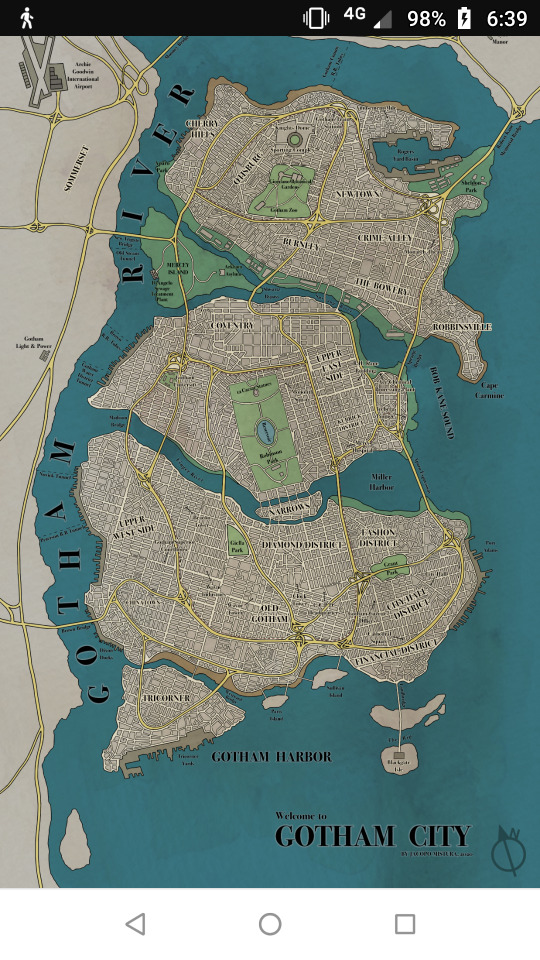
182 notes
·
View notes
Text


👏🏾Education 👏🏾is 👏🏾a 👏🏾right,👏🏾 not👏🏾 a👏🏾 service 👏🏾
Pass along and use the shit out of them
233K notes
·
View notes
Text
Slater's Guide to Military Terminology and Information
A guide for fanfiction readers and writers in the Call of Duty fandom (from a former competitive COD player herself). AKA a guide of how I write military speak and literally every vaguely military thing I've researched and learned that can be used in a story lol
Note: THIS IS NOT MEANT TO PROMOTE THE MILITARY, VIOLENCE, OR FIREARMS USAGE!!! THIS IS PURELY AN INFORMATIONAL POST FOR CALL OF DUTY ENTHUSIASTS, NEW FANS, AND FANART CREATORS!! USE THIS POST RESPONSIBLY!!
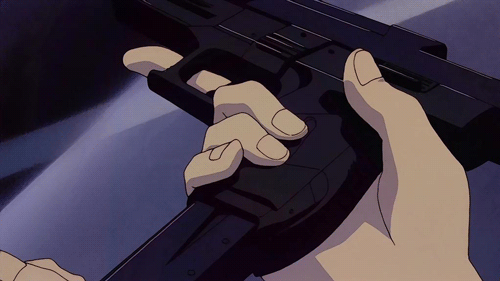
Location Terminology
LZ: Landing Zone, used for aircraft
AO: Area of Operation, where an exercise will take place
Target Area: Area with specific target, such as a person or object
Alpha/Beta/Charlie etc. (Site): Separate locations within the AO delineated by separate names
Movement Callouts
Advancing: Moving Forward
Pushing: Moving forward, often used in writing as quickly moving forward specifically towards an enemy
Strafing: 1. (COD game) moving sideways while continuously facing the same direction [oftentimes while shooting at an enemy] 2. (Real life) Shooting at an enemy from a low-flying aircraft
Retreating/Falling back: Moving away from an enemy, oftentimes because you do not have the ability to fight them any longer
Holding: Staying put in a single place
Cover to Cover: Moving from a position that is concealed from enemy fire to another position concealed by enemy fire
Breaking Away: Splitting off from a group
Pursuing: Following an objective or target
Pinned Down: Unable to move due to an enemy's maneuvers or fire
*EXTRA* Anaconda Maneuver: A reference to a large-scale military maneuver performed in 1861 by the American Union Army in the Civil War, which is simply "We'll take 'em from the front AND the back at the same time!!".....which is really fitting cause its called the Anaconda maneuver lol
Enemy Callouts
"Movement!" - There is someone moving in front of me
"# Tangos" or "# Combatants" or "# Enemies" or "# X-Rays" etc. - There are # number of enemies
"Taking enemy fire!" - I am being shot at by the enemy
"Contact!" - I see the enemy, they see me, we are firing at each other
"Taking heavy fire!" - I am being shot at by the enemy and it's a desperate situation; can also mean that the enemies have armor-piercing weapons
"Visual on enemy/objective/target/hostage" etc - I see the enemy /objective/target/hostage etc
"Taking small-arms fire!" - (Specifically for aircraft) Our aircraft is being shot at by regular sized guns from ground troops
"I have eyes on..." - I can see...
"# Military Aged Males" - Terminology used to describe men who are roughly 18-40 years old. They're usually plain-clothed, but because they fall into the correct age range to be drafted into the military/have military training, they are specifically flagged in case they pose a threat
“# Unknowns” - Used to describe unidentified possible combatants in a place of interest. They do not always mean that that person is a soldier. Sometimes, they can be civilians.
Common Radio Speak
Note: Preceding any radio communication, radio callsigns are often used to identify one's self. Radio callsigns are mad complicated, so I won't explain them specifically, but for more info on their usage, check the "Dialogue Examples" section at the end of this post!
"Please Advise" - Please tell me what I should do in this situation
"Send Traffic" - Tell me what you want to tell me.
"Go for [Callsign]" - I'm here, listening to you
"Repeat your last" - Repeat what you last said
"[Callsign] to Actual" - 'Actual' refers to the commanding officer
"How copy?" - What/how are you doing?
"Negative" - No
"Affirmative" or "Affirm" - Yes
"Copy" - Copy that
"Planting charges" or "Planting mine" or "Planting anchors" - I am planting explosive charges/mine/anchors
"Advancing/pushing to second deck" - I am moving to the second floor
"Jackpot" - We took the object or person we were looking for into custody
"Possible jackpot" - I have possibly found the person or object we came for
"Engaging" - I am going to start fighting the enemy
"3, 2, 1 - Enter! Enter!" or "3, 2, 1 - Breach!" - used when forcefully entering a building or doorway
"All Units" or "All Stations" - Precedes a message that is relevant to all personal on a mission
"Requesting [something]" (ex. backup, air support, recon overhead etc) - I request backup
"Be advised" - Be aware of something
"Check Fire" - Watch where you're firing; this can also mean you've accidentally shot a teammate or civilian
"Standby" - Hold on
“Secure the area” - Make sure there are no enemies in the area/kill all the enemies in the area
“Occupy the area” - forcefully stay in one place, defending it from enemies
Common Miscellaneous Acronyms and Nicknames
PID - Positive Identification
MTC - Mission Time Clock, refers to how much time a team has to complete a mission
RTB - "Returning to Base"
CO - Commanding Officer
NCO - Noncommissioned Officer
FOB - Forward Operating Base
MIA - Missing in Action
KIA - Killed in Action
AWOL - Absent Without Official Leave
EOD - Explosive Ordinance Disposal
IED - Improvised Explosive Device
SERE (Training) - Survival, Evasion, Resistance, and Escape
DMZ - Demilitarized Zone
VIP - Very Important Person, a person one is escorting through a certain area or otherwise protecting
SpecOps - Special Operations
MedEvac - Medical Evacuation
Op - Operation
Infil - Infiltration
Exfil - Exfiltration
Payload - 1. supplies, objects, or weapons that are being delivered somewhere 2. A bomb that is being dropped
Radio and Military Related Slang/Jokes
GOFO - "Grasp Of the Fucking Obvious"
Chest Candy - Ribbons/awards that a soldier earns
Whiskey Foxtrot - Stands for military letters W and F, meaning "What the fuck?"
"Out here" - used on the radio to signal that you've finished talking, usually preceded by a radio callsign
Charlie Foxtrot - Stands for military letters C and F, meaning "clusterfuck"
FUBAR - Fucked beyond all repair
"Got your six" or "Bringing up your six" or "Watch your six" - "I've got your back" or "I'm bringing up the rear" or "watch your back"
Plebe - a new recruit, someone without any experience
Oscar Mike - Stands for the military letters O and M, which is used to mean "We Are On the Move"
Mike-Mike - Stands for millimeter, which is often used to describe the size of grenades (i.e. 40 Mike Mike)
Barrack's Bunny - someone who has sex with many people throughout the barracks
Sandbox/sandpit - slang for a desert area
Chair Force - refers the USA Air Force
Civvies - Means "Civilians" or "Civilian clothing"
Mandatory Fun - company organized events/dinner
"Drop 'em" - drop from a aircraft or kill someone
GRUNT - Stands for "general, replaceable, untrained", refers to low ranking infantrymen
Jarhead - refers exclusively to marines
Flyboy - derogatory term for Air Force members
"Rog'" - Roger that
"Squirters" - people who run out of the back door of a building that is being attacked
"Danger close" - an attack being send from an aircraft that is dangerously close to friendly soldiers
"Watch your shots" - another way of saying "Check your fire"
“Fuckin’ A” - means “Fucking Affirmative”
“Repo Quickly” - (not 100% sure but I think it means) Reposition Quickly
“Rush” / “Bum-Rush” - Move towards someone extremely forcefully and quickly (kind of “rushing” towards them, typically without finesse)
Munitions
Munitions: ammunition, weapons, and equipment used in the field
Tactical Equipment: Equipment used in the field to gain an advantage, but that are not necessarily lethal. Examples include flash grenades, gas grenades, heartbeat sensors, and trip mines.
Lethal Equipment: Equipment used in the field aside from firearms with lethal intent. Examples include, grenades, Semtex (sticky grenades), poisonous gas, Molotovs cocktails, trip mines etc.
Ammunition: Bullets, rounds, shells that are loaded into a firearm. For grenade launchers, the grenades may be called ammunition.
Other Interesting Military Devices
Spotter scopes: binoculars that can have both a regular and thermal setting. They are used to survey an area for enemies. They also show you how far you are standing from the targets (usually in meters).
Anchors: Used to rappel down the sides of cliffs
Field ladders: Used to scale buildings
Sledge hammers: Used to break down doors and plant anchors
Thermite charges: a substance that burns at over 2000 degrees celsius and is used to burn through walls, doors, and locks
Door and wall charges: explosive charges used to explode walls and doors
Electro Magnetic Pulses: disables or interrupts electronic devices and communications
LIDAR: Light detection and ranging. A device that uses lasers to model tunnels underneath the ground. However, it can reflect off of certain circumstances, including snow
Thermal scopes: scopes that detect heat. Fun fact! They have an infinite range, meaning they can detect heat from any distance. However, they cannot see through walls or thick concrete.
Bullet Proof Vests
Note: Many people describe them incorrectly and it physically hurts my heart, so let's break it down.
Types of Wearable Protection
Kevlar Vests: A vest that is made out of Kevlar fabric, which offers protection against handguns and other relatively common arms. THEY ARE NOT FASTENED USING BUCKLES!!!! I see people in fan fiction constantly say "he secured the buckles on his vest" ALL. THE. TIME. Standard issue vests have buckles TO ADJUST THE SIZE, NOT TO PUT IT ON!! THEY ARE SECURED USING VELCRO AROUND THE WAIST! Legit, might be my number 1 pet peeve lol
Flak Jackets: A fabric vest made to withstand explosive casings and shrapnel. THEY DO NOT PROTECT AGAINST BULLETS!
Plate Carriers: A type of vest without protective padding. On their own, they do not provide any protection. However, armor plates must be zipped into the pockets onto the front and back of the vest. These plates are usually made out of steel. They can withstand heavier fire. The plates can be replaced when they break.
Firearms (Long Section Lol)
Basic Terms in Firearm Usage
"Effective Fire Range" - the greatest distance a bullet can be shot from and accurately damage a target. This is important when considering which firearms a character should use in a certain environment. Is their EFR long? Short?
Rechambering (and Rechambering Speed): When reloading, the previous cartridge must be expelled. In bolt action weapons, the bolt must be pulled back. More rounds or another mag will be inserted. Then, either the bolt will be pushed back in, or the charging handle will be pumped, which pushes a new round into the chamber. On a revolver, this comes in the form of the "hammer." On pistols, this is the "slide."
Fire Rate: the frequency a bullet can be shot from the gun
ADS: stands for "Aim Down Sight", which means aiming down the barrel, using iron sights or another type of sight
Hip-fire: Firing a weapon without aiming down sight
Different Fire Types
Fully Automatic vs Semi-Automatic vs Bolt-Action: 1. Fully automatic guns (in simple terms) fire continuously at a high rate until the trigger is released or until the magazine is empty; automatic rifles are usually magazine fed; they expel the bullet cartridges by themselves 2. Semi-Automatic guns fire one bullet each time the trigger is pulled; they expel the bullet carriages by themselves 3. Bolt-Action rifles fire once every time the trigger is pulled; the cartridge must be manually expelled by the user by pulling back the bolt on the side of the gun
Pump-action: Shotguns that use a sliding handguard to rechamber the bullet. Oftentimes, I just call the handguard the "slide"
Select-Fire Rifles: A gun that can be fired on both a "full-auto" and "semi-auto" setting; remember, full-auto = high fire rate while semi-auto is a little slower; the fire rate is switched by flipping a lever on firearm; Assault Rifles, Small Machine Guns, and Light Machine guns are usually select-fire
Types of Firearms
Sidearm: A less powerful gun or other weapon that you carry alongside your main firearm; (Real life) sidearm usually just means pistol; (COD game) sidearms can include pistols, knives, shotguns, and other melee weapons, like batons and tonfas
Shotgun: A type of gun that fires shotgun shells, which are a type of ammunition that contains pellets that spread upon firing. They have a typical range of 35-50m of effectiveness. They are extremely destructive at close range, and can even sever limbs if fired close enough. Their range is limited, however.
Lever Action Rifles: Rifles that are magazine fed, lever action, and with multiple fire rates. Small Machine Guns and Assault Rifles fall into this category. They have a high rate of fire and have a typical range of effectiveness of 150-300m. They fire the same type of bullets as pistols.
Bolt Action Rifles: Rifles that require the user to manually eject the cartridge via pulling back the bolt on (typically) the right side of the gun). They have a slower rate of fire. Sniper rifles and Marksman rifles fall into this category (depending on the model). They have an effective range of about 500-800m. They are very precise, and can often immobilize a target with a single shot.
*EXTRA* Armor Piercing Sniper Rifles (ex. .50 Cal Rifle): Rifles that use armor piercing rounds, which can pierce both vehicle armor and body armor. A single shot will immobilize any target. They can be both bolt action or lever action, with an effective armor piercing range of 200-600m and can be shot up to 2,000m away. These rifles are often large and heavy, with a length of over 4ft long and with over 25 pounds of weight.
Types of Ammunition
Shotgun shells
9mm Parabellum (for handguns and some rifles)
7.62 (for lever action rifles)
5.56 (for lever action rifles)
.50 Cal (for Sniper Rifles only)
There are way more, but I won't list them here
Simple Types of Modifications to Use in Your Story
Sights: A device affixed to the barrel of a gun to allow it to be aimed more accurately. Types of sights include red dot sights, holographic sights, scopes, and thermal optics. Without a sight mod, a gun comes equipped with Iron Sights.
Barrels: In general, the longer the barrel of a gun, the more accurate it becomes. Barrels can be swapped according to the range needed for a certain mission. Two types of barrels are rifled and unrifled, which affect how the bullets travel out of the gun.
Bi-pod: A stand that is affixed to the bottom of a gun (oftentimes a sniper rifle) to allow the user to set it on the ground with the barrel raised.
Types You Should Avoid (WARNING!!)
Sawed-off barrels: Often associated with the Wild West. Yeah, you can't just do that. They will not be used in proper military settings either.
Semi-automatic to Full-auto modifications: Civilians (USA) cannot own full-auto weapons that were manufactured after 1986. You can own rifles made before 1986, but it requires a special license and also costs $20-30k. Modifying a rifle to have a full-auto setting is ILLEGAL.
.50 Cal Modifications: In a non-military setting, you will NOT find armor piercing guns. It is illegal.
Certain Ammo: Dragon's Breath shells, explosive rounds, and Bolo shells are also illegal, and should not be found in civilian OR military settings.
Silencers: If I remember correctly, silencers are illegal for civilians to use in most places.
Facts about Fire Fights
Over 90% of the rounds expended during a fire fight are used for COVER FIRE! Meaning that they aren't necessarily fired for the purpose of hitting the enemy, but rather, allowing the user to move to a different position.
Most people will not just "spray and pray" lever-action rifles. Even with weapons that have a high fire rate, most soldiers will precisely pull the trigger.
Gun kick increases with fire rate, which decreases precision.
As range increases, effectiveness decreases.
Sniper Rifles are used a long distance, often from a prone position.
You wouldn't think it's like this, but the longer the barrel of it is, it's usually easier to shoot (barring marksman and sniper rifles).
Call of Duty Video Game Slang
Camping - sitting in one place without moving, killing enemies as they come to you
Pushing - running into enemy territory
Killstreak - rewards given to the player for killing several enemies in a row without dying
Killcam - the recording of a player's death before they respawn
KD - Kill Death Ratio
"I'm going negative" or "I am negative" - I have a KD below 1, which means I've died more times than I've gotten kills
"I'm going positive" or "I am positive" - I am a KD over 1, which means I've gotten more kills than the amount of time I've died
"I'm carrying" - I have a significantly higher kildcount than everyone else on my team
"I'm throwing" - I'm doing worse than anyone else on my team
"Shotgunner" - a player using a shotgun
"Knife guy" - a person who is only wielding a knife
"He's one shot" - if he gets hit another time, he'll die
"I downed him" or "I knocked him" - he's down and needs to be revived
"I broke him" - he's out of armor plates
Dialogue Examples
"Bravo 0-7 to Watcher 1, taking heavy fire from the East. Requesting air support!"
"Copy, 0-7. Air support inbound on your location"
"Rog.'"
"Bravo 0-7 to Baseplate Actual."
"Baseplate Actual to Bravo 0-7, send traffic."
"Negative on target ID. Holding on first deck. Please advise."
"Copy. Return to entryway. Regroup with Alpha team."
"Copy."
"All units, be advised, there are civilians in the target area. I repeat, there are civilians in the target area. Check your fire."
"Copy."
"Bravo 0-7 to Overlord Actual, I have visual on Target Area. I repeat, I have visual on target area. Three military aged males in the east corner, no visible weapons. Two unknowns in the center of the plaza. Please advise."
"Contact!"
"Copy, all units, weapons free. Fire at will."
"Bravo 0-7, advancing to rooftop. Deploying field ladder."
"Copy."
701 notes
·
View notes
Text
Some of my favorite words and phrases to describe a character in pain
coiling (up in a ball, in on themselves, against something, etc)
panting (there’s a slew of adjectives you can put after this, my favorites are shakily, weakly, etc)
keeling over (synonyms are words like collapsing, which is equally as good but overused in media)
trembling/shivering (additional adjectives could be violently, uncontrollably, etc)
sobbing (weeping is a synonym but i’ve never liked that word. also love using sob by itself, as a noun, like “he let out a quiet sob”)
whimpering (love hitting the wips with this word when a character is weak, especially when the pain is subsiding. also love using it for nightmares/attacks and things like that)
clinging (to someone or something, maybe even to themselves or their own clothes)
writhing/thrashing (maybe someone’s holding them down, or maybe they’re in bed alone)
crying (not actual tears. cry as in a shrill, sudden shout)
dazed (usually after the pain has subsided, or when adrenaline is still flowing)
wincing (probably overused but i love this word. synonym could be grimacing)
doubling-over (kinda close to keeling over but they don’t actually hit the ground, just kinda fold in on themselves)
heaving (i like to use it for describing the way someone’s breathing, ex. “heaving breaths” but can also be used for the nasty stuff like dry heaving or vomiting)
gasping/sucking/drawing in a breath (or any other words and phrases that mean a sharp intake of breath, that shite is gold)
murmuring/muttering/whispering (or other quiet forms of speaking after enduring intense pain)
hiccuping/spluttering/sniffling (words that generally imply crying without saying crying. the word crying is used so much it kinda loses its appeal, that’s why i like to mix other words like these in)
stuttering (or other general terms that show an impaired ability to speak — when someone’s in intense pain, it gets hard to talk)
staggering/stumbling (there is a difference between pain that makes you not want to stand, and pain that makes it impossible to stand. explore that!)
recoiling/shrinking away (from either the threat or someone trying to help)
pleading/begging (again, to the threat, someone trying to help, or just begging the pain to stop)
Feel free to add your favorites or most used in the comments/reblogs!
43K notes
·
View notes
Text
The symbolism of flowers
Flowers have a long history of symbolism that you can incorporate into your writing to give subtext.
Symbolism varies between cultures and customs, and these particular examples come from Victorian Era Britain. You'll find examples of this symbolism in many well-known novels of the era!
Amaryllis: Pride
Black-eyed Susan: Justice
Bluebell: Humility
Calla Lily: Beauty
Pink Camellia: Longing
Carnations: Female love
Yellow Carnation: Rejection
Clematis: Mental beauty
Columbine: Foolishness
Cyclamen: Resignation
Daffodil: Unrivalled love
Daisy: Innocence, loyalty
Forget-me-not: True love
Gardenia: Secret love
Geranium: Folly, stupidity
Gladiolus: Integrity, strength
Hibiscus: Delicate beauty
Honeysuckle: Bonds of love
Blue Hyacinth: Constancy
Hydrangea: Frigid, heartless
Iris: Faith, trust, wisdom
White Jasmine: Amiability
Lavender: Distrust
Lilac: Joy of youth
White Lily: Purity
Orange Lily: Hatred
Tiger Lily: Wealth, pride
Lily-of-the-valley: Sweetness, humility
Lotus: Enlightenment, rebirth
Magnolia: Nobility
Marigold: Grief, jealousy
Morning Glory: Affection
Nasturtium: Patriotism, conquest
Pansy: Thoughtfulness
Peony: Bashfulness, shame
Poppy: Consolation
Red Rose: Love
Yellow Rose: Jealously, infidelity
Snapdragon: Deception, grace
Sunflower: Adoration
Sweet Willian: Gallantry
Red Tulip: Passion
Violet: Watchfulness, modesty
Yarrow: Everlasting love
Zinnia: Absent, affection
57K notes
·
View notes
Text
Writing a novel when you imagine all you stories in film format is hard because there’s really no written equivalent of “lens flare” or “slow motion montage backed by Gregorian choir”
168K notes
·
View notes
Text
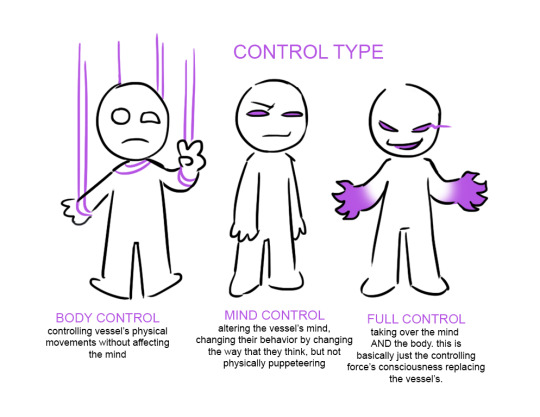

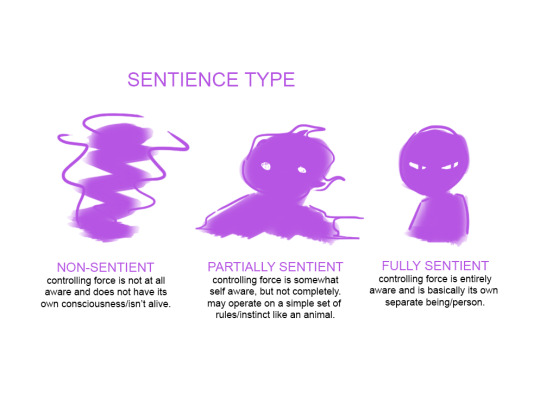
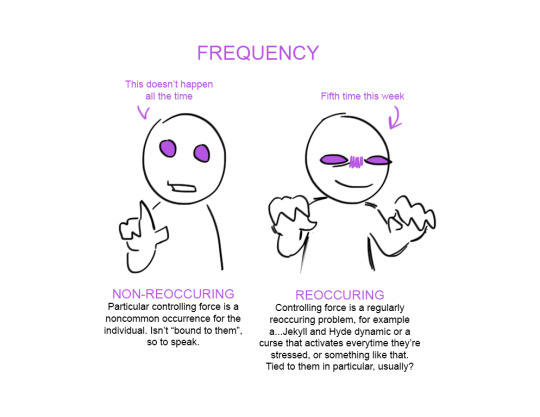
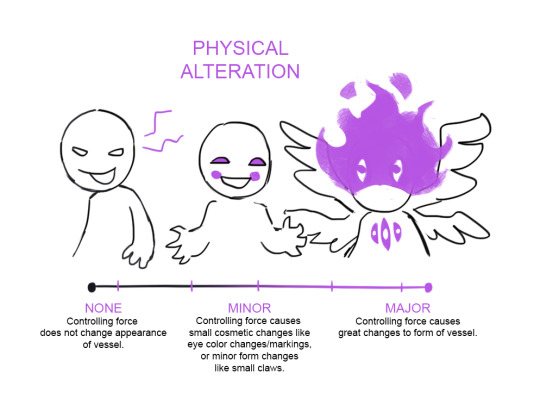
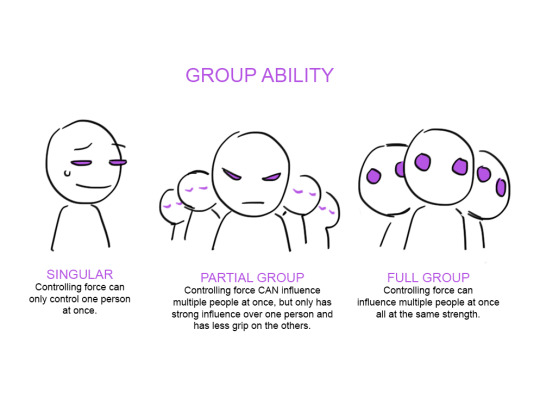
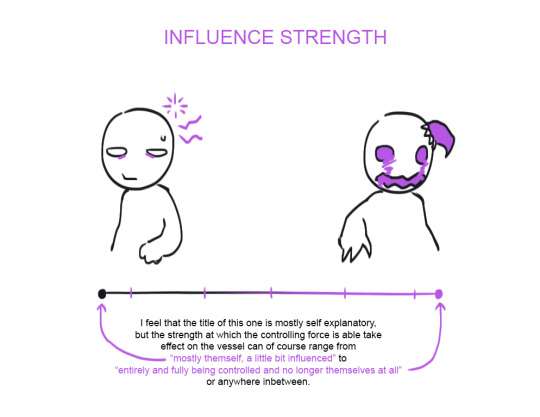
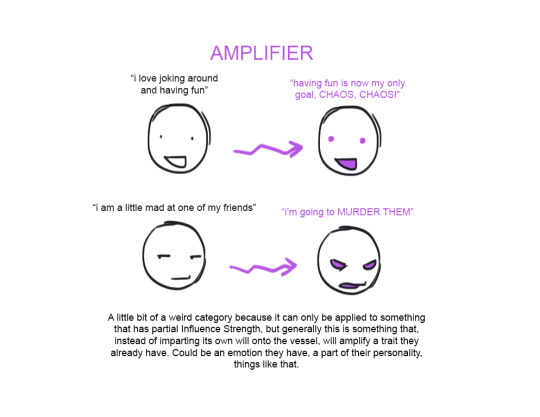
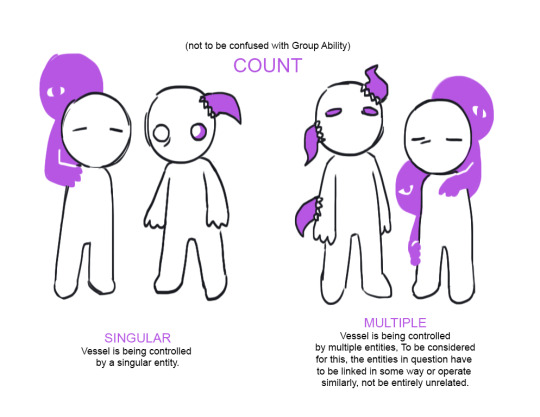
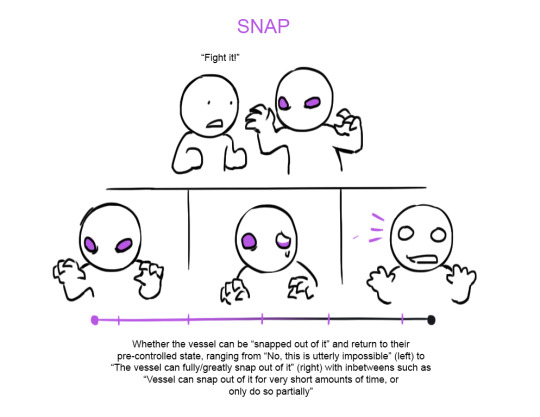
Hello i'm a normal person here's some stuff i drew to illustrate different traits different "person getting controlled" tropes can have
61K notes
·
View notes




